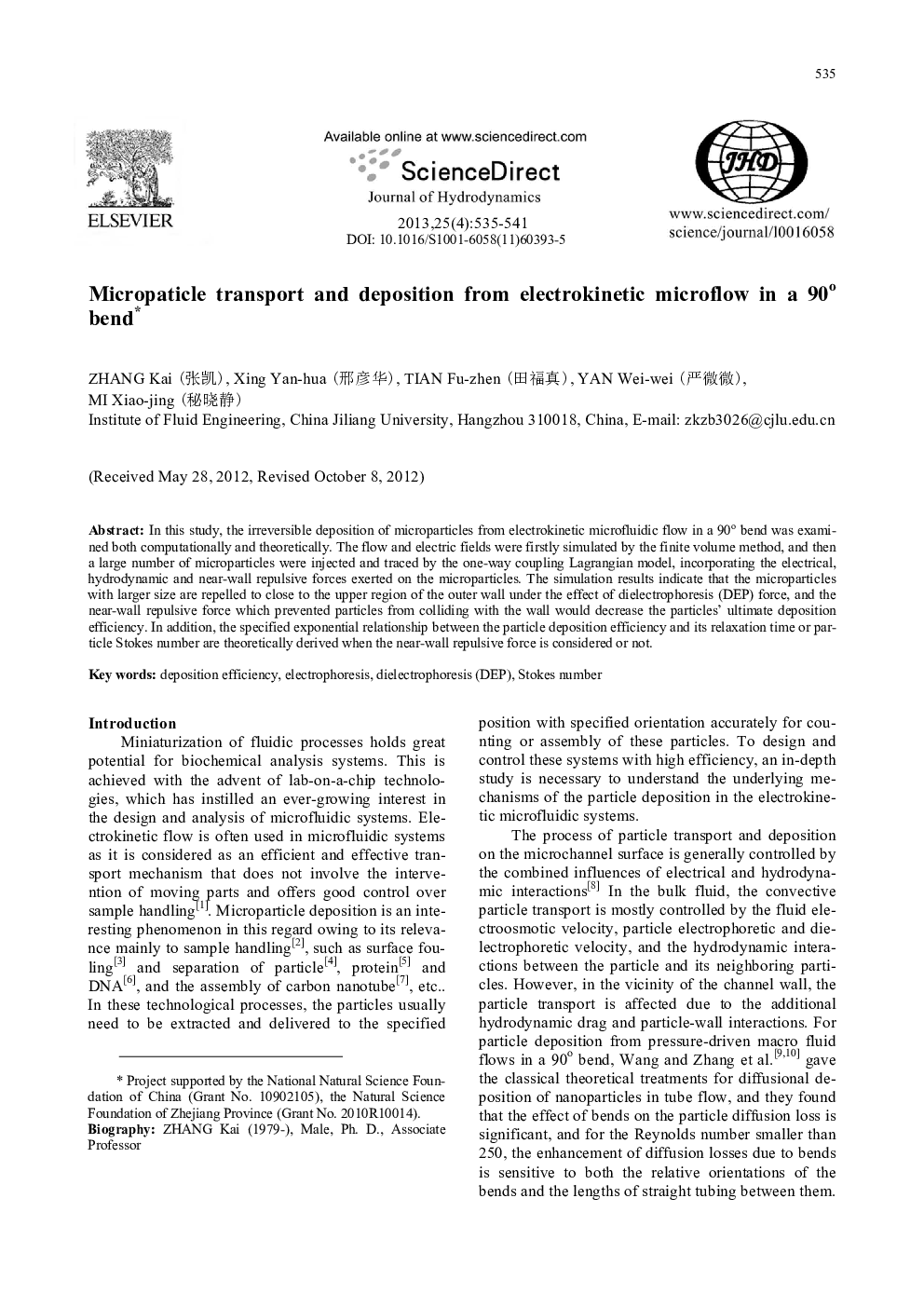| Article ID | Journal | Published Year | Pages | File Type |
|---|---|---|---|---|
| 1722303 | Journal of Hydrodynamics, Ser. B | 2013 | 7 Pages |
In this study, the irreversible deposition of microparticles from electrokinetic microfluidic flow in a 90° bend was exami- ned both computationally and theoretically. The flow and electric fields were firstly simulated by the finite volume method, and then a large number of microparticles were injected and traced by the one-way coupling Lagrangian model, incorporating the electrical, hydrodynamic and near-wall repulsive forces exerted on the microparticles. The simulation results indicate that the microparticles with larger size are repelled to close to the upper region of the outer wall under the effect of dielectrophoresis (DEP) force, and the near-wall repulsive force which prevented particles from colliding with the wall would decrease the particles' ultimate deposition efficiency. In addition, the specified exponential relationship between the particle deposition efficiency and its relaxation time or par- ticle Stokes number are theoretically derived when the near-wall repulsive force is considered or not.
